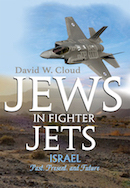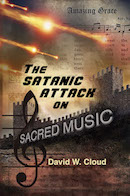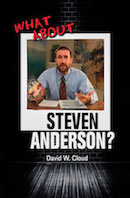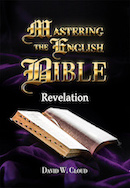866-295-4143, fbns@wayoflife.org
The following is derived from our new book Contemplative Mysticism: A Powerful Ecumenical Bond. This is available from Way of Life Literature. If it is not yet available through the online catalog, it can be ordered by phone or e-mail with a credit card.
The Catholic contemplative practices (e.g., centering prayer, lectio divina, the Jesus prayer, Breath prayer, visualization prayer) that are flooding into evangelicalism are an interfaith bridge to eastern religions.
Many are openly promoting the integration of pagan practices such as Zen Buddhism and Hindu yoga.
In the book Spiritual Friend (which is highly recommended by the “evangelical” Richard Foster), Tilden Edwards says:
“This mystical stream is THE WESTERN BRIDGE TO FAR EASTERN SPIRITUALITY” (Spiritual Friend, 1980, pp. 18, 19).
Since Eastern “spirituality” is idol worship and the worship of self and thus is communion with devils, what Edwards is unwittingly saying is that contemplative practices are a bridge to demonic realms.
The Roman Catholic contemplative gurus that the evangelicals are following have, in recent decades, developed intimate relationships with pagan mystics.
Jesuit priest Thomas Clarke admits that the Catholic contemplative movement has “BEEN INFLUENCED BY ZEN BUDDHISM, TRANSCENDENTAL MEDITATION, OR OTHER CURRENTS OF EASTERN SPIRITUALITY” (Finding Grace at the Center, pp. 79, 80).
Consider just a few of the many examples we could give.
THOMAS MERTON, the most influential Roman Catholic contemplative of this generation, was “a strong builder of bridges between East and West” (Twentieth-Century Mystics, p. 39). The Yoga Journal makes the following observation:
“Merton had encountered Zen Buddhism, Sufism, Taoism and Vedanta many years prior to his Asian journey. MERTON WAS ABLE TO UNCOVER THE STREAM WHERE THE WISDOM OF EAST AND WEST MERGE AND FLOW TOGETHER, BEYOND DOGMA, IN THE DEPTHS OF INNER EXPERIENCE. ... Merton embraced the spiritual philosophies of the East and integrated this wisdom into (his) own life through direct practice” (Yoga Journal, Jan.-Feb. 1999, quoted from Lighthouse Trails web site).
Merton was a student of Zen master Daisetsu Suzuki and Buddhist monk Thich Nhat Hanh. In fact, he claimed to be both a Buddhist and a Christian. The titles of his books include Zen and the Birds of the Appetite and Mystics and the Zen Masters. He said: “I see no contradiction between Buddhism and Christianity. The future of Zen is in the West. I intend to become as good a Buddhist as I can” (David Steindl-Rast, “Recollection of Thomas Merton’s Last Days in the West,” Monastic Studies, 7:10, 1969, http://www.gratefulness.org/readings/dsr_merton_recol2.htm).
Merton defined mysticism as an experience with wisdom and God beyond words. In a speech to monks of eastern religions in Calcutta in October 1968 he said: “... the deepest level of communication is not communication, but communion. IT IS WORDLESS. IT IS BEYOND WORDS, AND IT IS BEYOND SPEECH, and it is BEYOND CONCEPT” (The Asian Journal of Thomas Merton, 1975 edition, p. 308).
In 1969 Merton took the trip of his dreams, to visit India, Ceylon, Singapore, and Thailand, to experience the places where his beloved eastern religions were born. He said he was “going home.”
In Sri Lanka he visited a Buddhist shrine by the ocean. Approaching the Buddha idols barefoot he was struck with the “great smiles,” their countenance signifying that they were “questioning nothing, knowing everything, rejecting nothing, the peace ... that has seen through every question without trying to discredit anyone or anything--without refutation--without establishing some other argument” (The Asian Journal, p. 233).
This alleged wisdom is a complete denial of the Bible, which teaches us that there is truth and there is error, light and darkness, God and Satan, and they are not one. The apostle John said, “And we know that we are of God, and the whole world lieth in wickedness” (1 John 5:19). True wisdom lies in testing all things by God’s infallible Revelation and rejecting that which is false. Proverbs says, “The simple believeth every word: but the prudent man looketh well to his going” (Prov. 14:15).
Merton described his visit to the Buddhas as an experience of great illumination, a vision of “inner clearness.” He said, “I don’t know when in my life I have ever had such a sense of beauty and spiritual validity running together in one aesthetic illumination” (The Asian Journal, p. 235). Actually it was a demonic delusion.
Six days later Merton was electrocuted in a cottage in Bangkok by a faulty fan switch. He was fifty-four years old.
Merton has many disciples in the Roman Catholic Church, including David Steindle-Rast, William Johnston, Henri Nouwen, Philip St. Romain, William Shannon, and James Finley.
Benedictine monk JOHN MAIN, who is a pioneer in the field of contemplative spirituality, studied under a Hindu guru. Main combined Catholic contemplative practices with yoga and in 1975 began founding meditation groups in Catholic monasteries on this principle. These spread outside of the Catholic Church and grew into an ecumenical network called the World Community for Christian Meditation (WCCM). He taught the following method:
“Sit still and upright, close your eyes and repeat your prayer-phrase (mantra). Recite your prayer-phrase and gently listen to it as you say it. DO NOT THINK ABOUT ANYTHING. As thoughts come, simply keep returning to your prayer-phrase. In this way, one places everything aside: INSTEAD OF TALKING TO GOD, ONE IS JUST BEING WITH GOD, allowing God’s presence to fill his heart, thus transforming his inner being” (The Teaching of Dom John Main: How to Meditate, Meditation Group of Saint Patrick’s Basilica, Ottawa, Canada).
THOMAS KEATING is heavily involved in interfaith dialogue and promotes the use of contemplative practices as a tool for creating interfaith unity. He says, “It is important for us to appreciate the values that are present in the genuine teachings of the great religions of the world” (Finding Grace at the Center, 2002, p. 76).
Keating is past president of the Monastic Interreligious Dialogue (MID), which is sponsored by the Benedictine and Cistercian monasteries of North America. Founded in 1977, it is “committed to fostering interreligious and intermonastic dialogue AT THE LEVEL OF SPIRITUAL PRACTICE AND EXPERIENCE.” This means that they are using contemplative practices and yoga as the glue for interfaith unity to help create world peace. MID works in association with the Pontifical Council for Interreligious Dialogue. Consider one of the objectives of the MID:
“The methods of concentration used in other religious traditions can be useful for removing obstacles to a deep contact with God. THEY CAN GIVE A BETTER UNDERSTANDING OF THE ONENESS OF CHRIST AS EXPRESSED IN THE VARIOUS TRADITIONS and CONTRIBUTE TO THE FORMATION OF A NEW WORLD RELIGIOUS CULTURE. They can also be helpful in the development of certain potencies in the individual, for THERE ARE SOME ZEN-HINDU-SUFI-ETC. DIMENSIONS IN EACH HEART” (Mary L. O’Hara, “Report on Monastic Meeting at Petersham,” MID Bulletin 1, October 1977).
Keating and Richard Foster are involved in the Living Spiritual Teachers Project, a group that associates together Zen Buddhist monks and nuns, universalists, occultists, and New Agers. Members include the Dalai Lama, who claims to be the reincarnation of an advanced spiritual person; Marianne Williamson, promoter of the occultic A Course in Miracles; Marcus Borg, who believes that Jesus was not virgin born and did not rise from the grave; Catholic nun Joan Chittister, who says we must become “in tune with the cosmic voice of God”; Andrew Harvey, who says that men need to “claim their divine humanity”; Matthew Fox, who believes there are many paths to God; Alan Jones, who calls the doctrine of the cross a vile doctrine; and Desmond Tutu, who says “because everybody is a God-carrier, all are brothers and sisters.”
M. BASIL PENNINGTON, a Roman Catholic Trappist monk and co-author of the influential contemplative book Finding Grace at the Center, calls Hindu swamis “our wise friends from the East” and says, “Many Christians who take their prayer life seriously have been greatly helped by Yoga, Zen, TM, and similar practices...” (25th anniversary edition, p. 23).
In his foreword to THOMAS RYAN’S book Disciplines for Christian Living, Henri Nouwen says: “[T]he author shows A WONDERFUL OPENNESS TO THE GIFTS OF BUDDHISM, HINDUISM, AND MOSLEM RELIGION. He discovers their great wisdom for the spiritual life of the Christian and does not hesitate to bring that wisdom home.”
ANTHONY DE MELLO readily admitted to borrowing from Buddhist Zen masters and Hindu gurus. He even taught that God is everything: “Think of the air as of an immense ocean that surrounds you ... an ocean heavily colored with God’s presence and God’s bring. ... While you draw the air into your lungs you are drawing God in” (Sadhana: A Way to God, p. 36).
De Mello suggested chanting the Hindu word “om” (p. 49) and even instructed his students to communicate with inanimate objects:
“Choose some object that you use frequently: a pen, a cup ... Now gently place the object in front of you or on your lap and speak to it. Begin by asking it questions about itself, its life, its origins, its future. And listen while it unfolds to you the secret of its being and of its destiny. Listen while it explains to you what existence means to it. Your object has some hidden wisdom to reveal to you about yourself. Ask for this and listen to what it has to say. There is something that you can give this object. What is it? What does it want from you?” (p. 55).
Paulist priest THOMAS RYAN took a sabbatical in India in 1991 and was initiated in yoga and Buddhist meditation. Today he is a certified teacher of Kripalu yoga. In his book Prayer of Heart and Body: Meditation and Yoga as Christian Spiritual Practice (1995) and his DVD Yoga Prayer (2004) he combines Catholic contemplative practices with Hindu yoga.
All of these are influential voices in the contemplative movement, and those who dabble in the movement will eventually associate with them and with others like them. This the Bible forbids in the strongest terms.
“Be ye not unequally yoked together with unbelievers: for what fellowship hath righteousness with unrighteousness? and what communion hath light with darkness? And what concord hath Christ with Belial? or what part hath he that believeth with an infidel? And what agreement hath the temple of God with idols? for ye are the temple of the living God; as God hath said, I will dwell in them, and walk in them; and I will be their God, and they shall be my people. Wherefore come out from among them, and be ye separate, saith the Lord, and touch not the unclean thing; and I will receive you” (2 Corinthians 6:14-17).
SOME OF THE ROMAN CATHOLIC CONTEMPLATIVE PRIESTS HAVE PURSUED THEIR INTERFAITH VENTURE SO FAR THAT THEY HAVE BECOME HINDU AND ZEN BUDDHIST MONKS. FOLLOWING ARE A FEW EXAMPLES:
JULES MONCHANIN and HENRI LE SAUX, Benedictine priests, founded a Hindu-Christian ashram in India called Shantivanam (Forest of Peace). They took the names of Hindu holy men, with le Saux calling himself Swami Abhishiktananda (bliss of the anointed one). He stayed in Hindu ashrams and learned from Hindu gurus, going barefoot, wearing an orange robe, and practicing vegetarianism. In 1968 le Saux became a hermit in the Himalayas, living there until his death in 1973.
The Shantivanam Ashram was subsequently led by ALAN GRIFFITHS (1906-93). He called himself Swami Dayananda (bliss of compassion). Through his books and lecture tours Griffiths had a large influence in promoting the interfaith philosophy in Roman Catholic monasteries in America, England, Australia, and Germany. He eventually came to believe in the reality of goddess worship.
WAYNE TEASDALE (1945-2004) was a Roman Catholic lay monk whose writings are influential in the contemplative movement. As a student in a Catholic college in Massachusetts, he began visiting St. Joseph’s Abbey near Spencer and came under the direction of Thomas Keating. This led him into an intimate association with pagan religions and the adoption of Hinduism. Teasdale visited Shantivanam Ashram and lived in a nearby Hindu ashram for two years, following in Bede Griffiths’ footsteps. In 1989 he became a “Christian” sanyassa or a Hindu monk. Teasdale was deeply involved in interfaith activities, believing that what the religions hold in common can be the basis for creating a new world, which he called the “Interspiritual Age” -- a “global culture based on common spiritual values.” He believed that mystics of all religions are in touch with the same God. He helped found the Interspiritual Dialogue in Action (ISDnA), one of the many New Age organizations affiliated with the United Nations. (Its NGO sponsor is the National Service Conference of the American Ethical Union.) It is committed “to actively serve in the evolution of human consciousness and global transformation.”
WILLIGIS JAGER, a well-known German Benedictine priest who has published contemplative books in German and English, spent six years studying Zen Buddhism under Yamada Koun Roshi. (Roshi is the title of a Zen master.) In 1981 he was authorized as a Zen teacher and took the name Ko-un Roshi. He moved back to Germany and began teaching Zen at the Munsterschwarzach Abbey, drawing as many as 150 people a day.
In February 2002 he was ordered by Cardinal Joseph Ratzinger (currently Pope Benedict XVI) to cease all public activities. He was “faulted for playing down the Christian concept of God as a person and for stressing mystical experience above doctrinal truths” (“Two More Scholars Censured by Rome,” National Catholic Reporter, March 1, 2002).
Thus, Ratzinger tried to stem the tide of eastern mysticism that is flooding into the Catholic monastic communities, but he was extremely inconsistent and ultimately ineffectual.
Jager kept quiet for a little while, but soon he was speaking and writing again. In 2003 Liguori Press published Search for the Meaning of Life: Essays and Reflections on the Mystical Experience, and in 2006 Liguori published Mysticism for Modern Times: Conversations with Willigis Jager
Jager denies the creation and fall of man as taught in the Bible. He denies the unique divinity of Christ, as well as His substitutionary atonement and bodily resurrection. He believes that the universe is evolving and that evolving universe is God. He believes that man has reached a major milestone in evolution, that he is entering an era in which his consciousness will be transformed. Jager believes in the divinity of man, that what Christ is every man can become. He believes that all religions point to the same God and promotes interfaith dialogue as the key to unifying mankind.
Jager learned these heretical pagan doctrines from his close association with Zen Buddhism and his mindless mysticism. He says that the aim of Christian prayer is transcendental contemplation in which the practitioner enters a deeper level of consciousness. This requires emptying the mind, which is achieved by focusing on the breathing and repeating a mantra. This “quiets the rational mind,” “empties the mind,” and “frustrates our ordinary discursive thinking” (James Conner, “Contemplative Retreat for Monastics,” Monastic Interreligious Dialogue Bulletin, Oct. 1985).
This is the same practice that is taught in the 14th century Catholic writing The Cloud of Unknowing, which is very influential in modern contemplative circles.
Jager says that as the rational thinking is emptied and transformed, one “seems to lose orientation” and must “go on in blind faith and trust.” He says that there is “nothing to do but surrender” to “THIS PURE BLACKNESS” where “NO IMAGE OR THOUGHT OF GOD REMAINS.”
This is idolatry. To reject the Revelation God has given of Himself and to attempt to find Him beyond this Revelation through blind mysticism is to trade the true and living God for an idol.
THERE IS ALSO AN INTIMATE AND GROWING RELATIONSHIP BETWEEN THE CATHOLIC CONTEMPLATIVE MOVEMENT AND THE NEW AGE.
The aforementioned Thomas Keating is past president of the Temple of Understanding, a New Age organization founded in 1960 by Juliet Hollister. The mission of this organization is to “create a more just and peaceful world.” The tools for reaching this objective include interfaith education, dialogue, and experiential knowledge (mystical practices).
Shambhala Publications, a publisher that specializes in Occultic, Jungian, New Age, Buddhist, and Hindu writings, also publishes the writings of Catholic mystics, including The Wisdom of the Desert by Thomas Merton, The Writings of Hildegard of Bingen, and The Practice of the Presence of God by Brother Lawrence.
Sue Monk Kidd, who believes in the divinity of mankind and considers herself a goddess, was asked to write recommendations to two Catholic contemplative books. She wrote the foreword to the 2006 edition of Henri Nouwen’s With Open Hands and the introduction to the 2007 edition of Thomas Merton’s New Seeds of Contemplation.
New Ager Caroline Myss (pronounced mace) has written a book based on Teresa of Avila’s visions. It is entitled Entering the Castle: Finding the Inner Path to God and Your Soul’s Purpose. Myss says, “For me, the spirit is the vessel of divinity” (“Caroline Myss’ Journey,” Conscious Choice, September 2003).
On April 15, 2008, emerging church leaders Rob Bell and Doug Pagitt joined the Dalai Lama for the New Age Seeds of Compassion InterSpiritual Event in Seattle. It brought together Episcopalians, Roman Catholics, Buddhists, Sikhs, Muslims, and others. The event featured a dialogue on “the themes common to all spiritual traditions.” The Dalai Lama said, “I think everyone, ultimately, deep inside [has] some kind of goodness” (“Emergent Church Leaders’ InterSpirituality,” Christian Post, April 17, 2008).
In his book Velvet Jesus, Bell gives a glowing recommendation of the New Age philosopher Ken Wilber. Bell recommends that his readers sit at Wilber’s feet for three months!
“For a mind-blowing introduction to emergence theory and divine creativity, set aside three months and read Ken Wilber’s A Brief History of Everything” (Velvet Elvis, p. 192).
The aforementioned Catholic contemplative monk Wayne Teasdale conducted a Mystic Heart seminar series with Wilber. In the first seminar in this series Teasdale said, “You are God; I am God; they are God; it is God” (“The Mystic Heart: The Supreme Identity,” http://video.google.com/videoplay?docid=-7652038071112490301&q=ken+Wilber).
Roger Oakland remarks:
“Ken Wilber was raised in a conservative Christian church, but at some point he left that faith and is now a major proponent of Buddhist mysticism. His book that Bell recommends, A Brief History of Everything, is published by Shambhala Publications, named after the term, which in Buddhism means the mystical abode of spirit beings. ... Wilber is perhaps best known for what he calls integral theory. On his website, he has a chart called the Integral Life Practice Matrix, which lists several activities one can practice ‘to authentically exercise all aspects or dimensions of your own being-in-the-world’ Here are a few of these spiritual activities that Wilber promotes: yoga, Zen, centering prayer, kabbalah (Jewish mysticism), TM, tantra (Hindu-based sexuality), and kundalini yoga. ... A Brief History of Everything discusses these practices (in a favorable light) as well. For Rob Bell to say that Wilber’s book is ‘mind-blowing’ and readers should spend three months in it leaves no room for doubt regarding Rob Bell’s spiritual sympathies. What is alarming is that so many Christian venues, such as Christian junior high and high schools, are using Velvet Elvis and the Noomas” (Faith Undone, p. 110).
In Up from Eden: A Transpersonal View of Human Evolution (1981, 2004), Ken Wilber calls the Garden of Eden a fable” and the biblical view of history “amusing” (pp. xix, 3). He describes his “perennial philosophy” as follows:
“... it is true that there is some sort of Infinite, some type of Absolute Godhead, but it cannot properly be conceived as a colossal Being, a great Daddy, or a big Creator set apart from its creations, from things and events and human beings themselves. Rather, it is best conceived (metaphorically) as the ground or suchness or condition of all things and events. It is not a Big Thing set apart from finite things, but rather the reality or suchness or ground of all things. ... the perennial philosophy declares that the absolute is One, Whole, and Undivided” (p. 6).
Wilber says that this perennial philosophy “forms the esoteric core of Hinduism, Buddhism, Taoism, Sufism, AND CHRISTIAN MYSTICISM” (p. 5).
Thus, this New Ager recognizes that Roman Catholic mysticism, which spawned the contemplative movement within Protestantism, has the same esoteric core faith as pagan idolatry!
copyright 2013, Way of Life Literature
- Receive these reports by email
- "About" David Cloud
- www.wayoflife.org
______________________
Sharing Policy: Much of our material is available for free, such as the hundreds of articles at the Way of Life web site. Other items we sell to help fund our expensive literature and foreign church planting ministries. Way of Life's content falls into two categories: sharable and non-sharable. Things that we encourage you to share include the audio sermons, O Timothy magazine, FBIS articles, and the free eVideos and free eBooks. You are welcome to make copies of these at your own expense and share them with friends and family, but they cannot be posted to web sites. You are also welcome to use excerpts from the articles in your writings, in sermons, in church bulletins, etc. All we ask is that you give proper credit. Things we do not want copied and distributed freely are items like the Fundamental Baptist Digital Library, print editions of our books, electronic editions of the books that we sell, the videos that we sell, etc. The items have taken years to produce at enormous expense in time and money, and we use the income from sales to help fund the ministry. We trust that your Christian honesty will preserve the integrity of this policy. "For the scripture saith, Thou shalt not muzzle the ox that treadeth out the corn. And, The labourer is worthy of his reward" (1 Timothy 5:18).
Goal:Distributed by Way of Life Literature Inc., the Fundamental Baptist Information Service is an e-mail posting for Bible-believing Christians. Established in 1974, Way of Life Literature is a fundamental Baptist preaching and publishing ministry based in Bethel Baptist Church, London, Ontario, of which Wilbert Unger is the founding Pastor. Brother Cloud lives in South Asia where he has been a church planting missionary since 1979. Our primary goal with the FBIS is to provide material to assist preachers in the edification and protection of the churches.
Offering: We take up a quarterly offering to fund this ministry, and those who use the materials are expected to participate (Galatians 6:6) if they can. We do not solicit funds from those who do not agree with our preaching and who are not helped by these publications. We seek offerings only from those who are helped. OFFERINGS can be mailed or made online with with Visa, Mastercard, Discover, or Paypal. For information see: www.wayoflife.org/about/makeanoffering.html.





